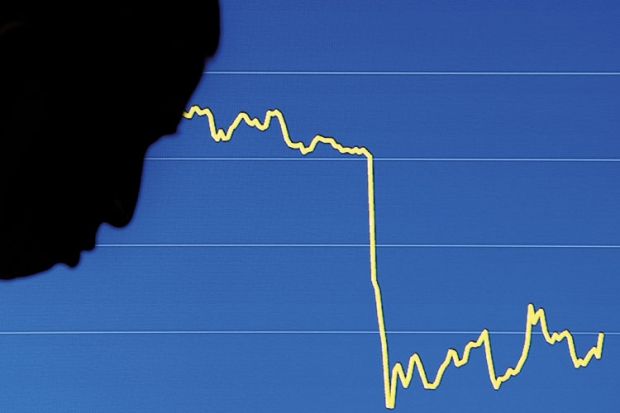Source: Getty
‘Correlation is not causation’: the Unesco report questions any link between research spend and income level
A United Nations report on Asian higher education has questioned the widely held belief among policymakers that investment in university research leads to economic growth.
The study, which looked at Malaysia and Thailand in particular, found that in those countries “very little” research could be commercialised, and even when it is, it “does not yield large financial payoffs”.
The report also suggests that the two nations may be spending on research largely to push themselves up world university rankings, which would mean that research has only “symbolic” value.
These findings, from Higher Education in Asia: Expanding Out, Expanding Up, published last month by the United Nations Educational, Scientific and Cultural Organisation, suggest that the huge sums some Asian nations are investing in research through universities might produce more growth if spent elsewhere.
China is known for spending significant sums on research. A report last year from the UK innovation charity Nesta, China’s Absorptive State: Research, Innovation and the Prospects for UK-China Collaboration, put the nation’s total R&D spend across universities and business at 1 trillion RMB (£95.7 billion) in 2012.
Separately, Unesco says that in 2011, 7.9 per cent of China’s R&D spending was channelled through universities.
But beyond China, other countries in the region funnel a greater share of their total R&D spending through universities, rather than businesses, government or non-profit organisations (see box, below).
“Many governments see universities as centres of research that will yield positive economic returns to the country,” Unesco says.
Although there is a “clear relation” between how much a country spends on R&D and its income level, “correlation is not causation”, it points out.
In 2011, South Korea spent more than 4 per cent of its gross domestic product on R&D, whereas India, which is much poorer, invested only 0.81 per cent, statistics in the report show. China invested 1.84 per cent, a figure that has nearly doubled since 2001.
But such differences do “not tell us if research leads to higher income levels, or if higher income levels allow for more research to be carried out”, Unesco says.
Poorer countries tend to catch up with richer ones by imitating technologies discovered elsewhere rather than engaging in “independent R&D and innovation”, it adds.
The report also distinguishes between R&D spending by businesses “which will have a clear positive impact on productivity and hence economic growth in a country” and research carried out at universities, about which it is much more lukewarm.
Universities are often subject to “unfavourable tax laws” and have “limited access to capital”, which reduces the economic return to research, it says.
“It is not clear, then, that university-based research necessarily leads to the economic payoffs that governments expect,” the report concludes.
But it does point out that investment in research can lead to higher-quality university education and so improve a country’s “human capital”.
The report also found that in Malaysia and Thailand, university managers were trying to increase their research output in order to climb up international university rankings.
Moving up the rankings would show that the country had a strong education system and so attract international investment, they believed. “Hence, the value of university-based research is symbolic,” Unesco says.
David Palfreyman, director of the Oxford Centre for Higher Education Policy Studies, said that the report’s arguments were significant as it was “usually assumed and asserted that research (with related intellectual property exploitation as technology transfer) is the key contribution of higher education to economic growth”.
Although the debate about the impact of university spending was a live one among economists, “economic growth may have much more to do with rule of law and labour market flexibility than anything from ever-more higher education funding”, he suggested, but added that this was unlikely to be admitted by universities themselves.
david.matthews@tsleducation.com
R&D in universities
| Percentage of national research and development funding spent in higher education institutions (2011, or most recent data available) | |
|---|---|
| Hong Kong (2010) | 52.2 |
| Iran (2008) | 33.3 |
| Malaysia | 28.9 |
| Singapore (2010) | 28.8 |
| Pakistan | 25.3 |
| Thailand (2009) | 24.9 |
| Philippines (2007) | 23.3 |
| Japan (2010) | 12.9 |
| South Korea (2010) | 10.8 |
| China | 7.9 |
| India (2007) | 4.4 |
Register to continue
Why register?
- Registration is free and only takes a moment
- Once registered, you can read 3 articles a month
- Sign up for our newsletter
Subscribe
Or subscribe for unlimited access to:
- Unlimited access to news, views, insights & reviews
- Digital editions
- Digital access to THE’s university and college rankings analysis
Already registered or a current subscriber? Login





